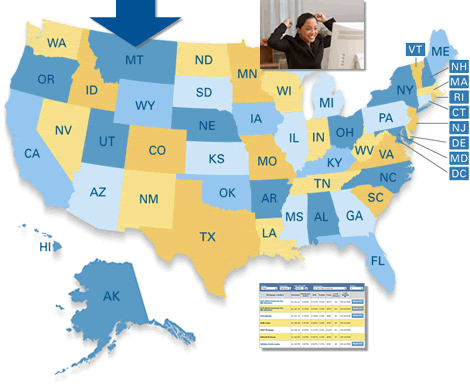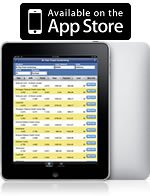DoorDash vs. Instacart: A Detailed Comparison of Earning Potential
In the burgeoning gig economy, two major players have emerged as frontrunners in the arena of app-based services: DoorDash, the game-changer in food delivery, and Instacart, the go-to platform for personalized grocery shopping. For those looking to join the ranks and earn a competitive income, understanding the nuances, requirements, and earning potential of each is crucial. This article delves into how DoorDash is revolutionizing food delivery and what it takes to become a trusted DoorDash driver, the diverse delivery options, and the income possibilities. Simultaneously, it explores Instacart's tailored grocery shopping experience, the intricacies involved in becoming an Instacart shopper, and the breadth of services from convenient store pickup to seamless delivery. Navigate through the ins and outs of DoorDash versus Instacart and uncover which platform holds the key to maximizing your cash earnings.
Comparison of Earnings Potential: DoorDash vs. Instacart
How Pay Is Calculated
DoorDash has a pay model that is transparent and comprises several components. Dashers earn a base pay for each delivery, which can vary depending on the estimated duration, distance, and desirability of the order. Additionally, they can earn more with promotions including Peak Pay and challenges, and keep 100% of customer tips.
Instacart, in contrast, offers a slightly different compensation structure for its shoppers. Payments include a base amount per batch completed, which is determined by the number and types of items, store location, and the difficulty in delivery. Shoppers can earn more with Peak Boosts during busier times, and similarly to DoorDash, they retain all customer tips.
Average Income Comparison
When it comes to average earnings, both platforms provide opportunities to earn, but reports can differ. Comparatively, DoorDash drivers often report average earnings ranging from $15-$25 per hour, though this can widely vary. Instacart shoppers' reported earnings are similar, with some claiming slightly higher payouts due to the nature of grocery shopping and delivery work, but this can be highly dependent on the market and time slots chosen.
Earnings can also fluctuate based on geographic location and demand. In larger, more urban cities with higher cost of living, both DoorDash and Instacart may offer higher rates to meet the increased demand, while smaller towns may see lower average earnings due to less frequent orders.
- Cities with a Larger Population: Might witness a higher earning potential due to more frequent orders and greater demand.
- Smaller Towns and Cities: Earnings may be less compared to larger urban areas, reflecting lower demand and fewer delivery opportunities.
Factors Affecting Earnings
Impact of Location on Income
As a delivery or grocery shopper professional, the city you work in can heavily influence your income potential. The local market demand plays a pivotal role in shaping the earning statistics. In densely populated cities or areas with a high demand for delivery services, you might see an uptick in order opportunities. However, it's not just about the quantity of work; metrics on earnings in various locations also suggest that rates and tipping culture may vary, which are worth considering when comparing DoorDash and Instacart.
Flexibility and Scheduling
The flexibility in your work schedule is another significant factor that can directly affect your earnings. For DoorDash and Instacart, income can fluctuate based on the time of day and the day of the week you choose to work. Those who strategically schedule their work during peak hours, such as mealtimes or weekends, may capitalize on increased demand and higher earning potential. Moreover, both platforms often offer bonus incentives for working during busy times or completing a certain number of deliveries, which can lead to a substantial boost in your overall earnings.
Maximizing Your Earnings on the Platforms
If you're toggling between DoorDash and Instacart, you're probably wondering how to squeeze the most out of each platform. To truly maximize your earnings, you'll need to employ some smart strategies tailored to the specifics of each service. Below, discover proven methods to enhance your earning potential.
Strategies for DoorDash
DoorDash offers a plethora of opportunities to increase your earnings. Success on this platform often boils down to efficiency and taking advantage of bonuses. Here are some tips:
- Optimizing Delivery Routes: Use routing apps to find the fastest paths between pickups and drop-offs. This can help you complete more deliveries in less time, hence more earnings.
- Peak Pay and Promotions: Keep an eye on the DoorDash app for times when Peak Pay is in effect, which gives you extra money on top of your base pay and tips. Also, pay attention to promotions that might offer additional earnings for completing a certain number of deliveries.
Techniques for Instacart
Instacart’s earnings can also be maximized with certain techniques that make you more efficient and increase the value of your time. Consider these approaches:
- Batch Shopping: Picking up multiple orders at once can significantly boost your hourly rate. Try to accept batch orders whenever possible to reduce downtime and travel expenses.
- High-Demand Periods and Scheduling: Working during high-demand periods, such as weekends and holidays, can increase your chances of getting high-value batches. Also, being smart with your scheduling helps you stay consistent and reliable, which can lead to better reviews and more opportunities.
Business Model Variation and Its Impact
DoorDash’s Approach to Food Delivery
DoorDash operates on a dynamic business model that caters to on-demand food delivery from restaurants to customers' doorsteps. As an intermediary, DoorDash charges fees for each order that are split amongst the platform, the restaurants, and the delivery personnel — known as Dashers. DoorDash's fee structure is complex, involving delivery fees, service fees, and optional tips, all of which influence the potential earnings for Dashers. It's essential to understand that Dashers' income is variable and is based on numerous factors including the number of deliveries, the distance travelled, the time of day, and the incentives provided by DoorDash during peak times or for certain areas.
Instacart’s Grocery Shopping Model
Instacart’s approach diverges from DoorDash by focusing on grocery delivery and pick-up services. The company partners with numerous grocery chains to offer shoppers the convenience of online ordering with home delivery or in-store pickup. This partnership impacts how Instacart's model and earnings work, as they generate revenue through delivery and service fees, and markup on store items. Instacart Shoppers earn money by fulfilling orders — they shop for and deliver groceries, or in some cases, just deliver after an in-store shopper has prepared the order. Instacart Shoppers' earnings are similarly affected by factors like order size, delivery distance, and peak time incentives. However, since shopping is involved, time management and shopping efficiency can also significantly impact earnings.
Understanding Costs and Profits
When examining the financial viability of working with DoorDash or Instacart, it's crucial to look beyond the surface of gross earnings and delve into the actual costs that affect your net income. To make an informed decision, let us break down and analyze the expenses associated with each service.
Assessing the Costs of Working with Each Service
Operating as an independent contractor for DoorDash or Instacart involves certain out-of-pocket expenses that can eat into your profits:
- Vehicle Expenses: Fuel costs, wear and tear, and the need for more frequent maintenance can significantly reduce your take-home pay.
- Maintenance: Keeping your vehicle in top condition is essential for continuous operation but comes with a cost that directly impacts your earnings.
- Associated Costs: Necessary expenditures such as auto insurance, health insurance, and self-employment taxes further encroach upon your net income.
Understanding these costs is integral to evaluating the true profitability of your delivery work. Let’s explore how customer tipping patterns can additionally influence your earnings.
Customer Tipping Patterns
Tips from customers can substantially augment your earnings, with their impact varying across the two platforms:
- Impact of Tipping: It's well-known that tipping can considerably boost your earnings on delivery jobs. The inflow from these gratuities is often unpredictable but crucial to overall income.
- Tipping Tendencies: Customers on both platforms have their own distinctive tipping behaviors. A comparative study of DoorDash and Instacart suggests that there are differences in tipping averages that could influence a driver’s preference.
Critical to squeezing the most out of your gig economy hustle is an appreciation of these financial nuances – comprehending the full spectrum of customer tipping habits and operational costs is key to understanding your potential profits.
Assessing Work as an Independent Contractor
Choosing to work with DoorDash or Instacart means embracing the role of an independent contractor. This status has its particular implications, changing the way one might approach their work-life balance, finances, and career growth. It's essential to have a clear understanding of what gig work encompasses to make an informed decision about earning potential in these delivery platforms.
What to Expect in Gig Work
As an independent contractor, you step into a world of flexibility and autonomy, but with these perks also come the responsibilities of managing your own taxes, work hours, and operational costs. You're essentially running a one-person business, where success largely hinges on your ability to effectively navigate the gig economy.
- Flexibility: Choose when and where to work, adapting your schedule to fit personal needs and preferences.
- Autonomy: Be your own boss, making decisions that directly influence your earnings and work style.
- Tax Considerations: Handle your own tax filings, which includes tracking expenses and understanding taxable income.
- Variable Income: Unlike a traditional job, your earnings may fluctuate based on demand, time invested, and strategic planning.
When considering gig work with DoorDash or Instacart, weigh the pros of a flexible schedule and self-management against the cons of uncertain income and self-taxation. The balance you find between these factors will significantly impact your satisfaction and financial outcome in gig work.
Beyond the standard earnings from delivering orders or grocery shopping, there are other financial factors to consider when comparing DoorDash and Instacart. Taking a closer look at the various additional income opportunities and market influences can help you make a well-informed decision about where to dedicate your efforts.
The Role of Sign-up Bonuses and Referral Programs
Exploring additional earning avenues like sign-up bonuses can significantly boost your initial earnings. Both DoorDash and Instacart offer promotional incentives for new drivers and shoppers. The specifics of these bonuses can vary based on promotional periods and market needs.
Comparing DoorDash’s and Instacart's referral program benefits reveals another layer of financial potential. These programs provide current contractors with a bonus for bringing new workers onto the platform. The payout for successful referrals may fluctuate, so it is important to stay updated on the most current offers from both services.
Pandemic Effect on Delivery Services
The onset of the COVID-19 pandemic fundamentally altered the landscape of delivery services, causing a significant spike in demand as customers favored home deliveries over traditional shopping. This led to increased earning opportunities for delivery personnel on both DoorDash and Instacart.
Considering the possible long-term effects on the delivery industry is essential when planning for future income. The delivery service market may continue evolving as the world adapts to post-pandemic norms, making it a variable to watch closely in the context of your potential earnings.
Concluding Thoughts on DoorDash vs Instacart Earnings
DoorDash and Instacart both present unique opportunities for individuals looking to earn additional cash through gig work. As we have discussed, the potential to earn money can vary greatly depending on numerous factors including location, time spent, and strategy for maximizing earnings. It is important to recognize that while one platform may offer higher base pay rates or more consistent work opportunities in some areas, the other might have better tips or bonuses that could lead to higher overall earnings.
Choosing between DoorDash and Instacart truly comes down to individual circumstances. Some may prefer the fast-paced nature of food delivery, while others might enjoy the more predictable schedule of grocery shopping. To make the most informed decision, prospective workers should consider their personal preferences, the flexibility of each platform, and the economic conditions of their specific market.
Fannie Mae & Jumbo Mortgage Rates
Just One Click! = Current Rate Chart

Start by selecting your state
Get the Updated and Improved Mortgage Rates App from ERATE.com
- Why housing consumers say you need a real estate agent
- Lenders Double Down on Car-Title Loans Attempting to Stay Ahead of Regulators
- Need Cash Fast? Beware of Greedy Lenders Waiting to Exploit You
- Mortgage Rates and the Stock Market: Understanding the Relationship
- The ERATE® Resource Guide to No-Closing-Cost Refinancing
- You and Your Credit; Make it a Happy Ongoing Relationship
- Principal Reduction: New Programs, More Controversy
- Understanding Mortgages: Mortgage Paperwork
- What is Mortgage Interest?
- Mortgage Terms & Definitions
- Understanding Mortgages: Types of Mortgages
- Understanding Mortgages: How to Get a Mortgage
- What is a Short Sale?
- Understanding Mortgages: Buy or Rent?
- Understanding Mortgages: Working with a Real Estate Agent
- Understanding Mortgages: Working with a Real Estate Agent
- Understanding Credit Cards: Top Mistakes
FREE Mortgage Rate Widgets
Your State's Rates or National Rates Get this Widget for any State you want

